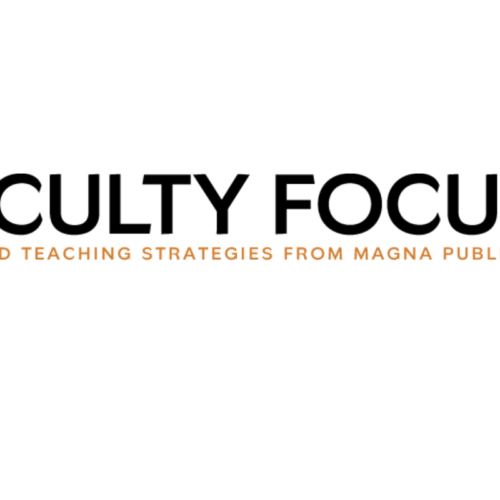The Chronicle of Higher Education’s Leadership Summit: The Next Generation of Teaching and Learning
I recently attended (virtually) The Chronicle of Higher Education’s Leadership Summit: The Next Generation of Teaching and Learning. The summit featured Jose Bowen (former president of Goucher College and author of the book Teaching Naked) David Wilson (President of Morgan State University) and Emily Magruder (who oversees the 23 teaching and learning centers in the Cal State System). The purpose of the panel was to assess lessons learned from pandemic teaching and to suggest ways that teaching will (or should) change in the future. Or, as the moderator put it, “Given our forced pedagogical experiment: how much will stick, and how much should stick in the post-pandemic university?”
Jose Bowen (who began his career as a music professor) said teaching in the past year reminded him of his days as a piano instructor when he would develop a practice plan and students would go off and do much of the work on their own, returning to show their progress and to be coached and evaluated. Bowen warned about the risks of simply reverting to old approaches to teaching and learning. He cited demographic changes among students, a preference for flexibility, and a desire to communicate privately with instructors during class (like the chat feature in Zoom) as some of the key factors. He also warned against investing too heavily in online instruction given the huge head start by schools like Southern New Hampshire and Arizona State University. He joked that colleges get in trouble by promising Star Wars: the movie and delivering Star Wars: the high school play. Instead, he said schools should leverage the value associated with their traditional campuses and stress the power of relationships to help build connections between students and faculty. He added that is essential maintain focus on inclusive approaches to teaching and to recognize that inclusive teaching practices also happen to be the most effective practices.
He noted the stress associated with pandemic teaching and said that faculty had to expend more time and effort to teach hybrid and hyflex classes, and that they often did so without a clear sense of how their work would be recognized or rewarded. Bowen cited the exemplary role of teaching centers in helping faculty make the shift to pandemic teaching, and added that “there has never been more time and effort invested in teaching and learning in such a short period”. He concluded by saying that colleges and universities must continue to invest in teaching as a way to distinguish themselves and to maintain the momentum created as a result of the pandemic.
President Wilson of Morgan State audited two of his school’s classes to get a better sense of how students and faculty were managing during the pandemic. He learned to appreciate why students sometimes preferred to have their cameras off during class and gained other insights into student’s lives including the physical and emotional stress associated with the pandemic. As a result, Morgan State will continue to promote a hyflex approach to classes in order to maximize student choices about participating in classes. He also gained appreciation for the dedication and creativity of his faculty, and noted the evident care and concern they showed for students in their classes. He concluded by urging colleges to find creative ways to maintain the rites and rituals associated with higher education while pursuing innovative ways to better meet the needs of students and their desire for a more flexible approach to classes.
Emily Magruder oversees teaching centers at the 23 Cal State campuses. She reflected on lessons learned over the past year. First, she noted that, for the most part, teaching centers were ready with programming and expertise to deal with the challenges associated with the rapid pivot to online teaching, and the biggest challenge was dealing with the huge jump in demand for programs and services. She said that the 23 centers worked in some way with 17,000 of the 28,000 faculty in the Cal State system! Some of the key lessons learned included:
- Instructional continuity plans developed for Cali-centric things like earthquakes and wildfires were a big help in moving teaching online
- Having an online backbone in the learning management system allowed faculty to build out a course more efficiently.
- The modality of the course matters less than how a faculty member can build community and check for student understanding
- Much of the work associated the teaching and learning can be done online (if it is done well)
- Faculty were forced to reconsider their relationship to content delivery and focus more on enduring and essential concepts
- The pandemic challenged established structure on how faculty assign grades and measure student learning
The panel discussion concluded with participants warning that the desire to snap back to old modes of instruction will be strong, and that while faculty seem willing to learn, questions remain about long-term impact. In particular, they cited the uncertain role that investment in teaching pays in tenure and promotion decisions, the risk associated with trying innovative approaches to teaching, and the toll of mental and physical energy needed to maintain momentum.




